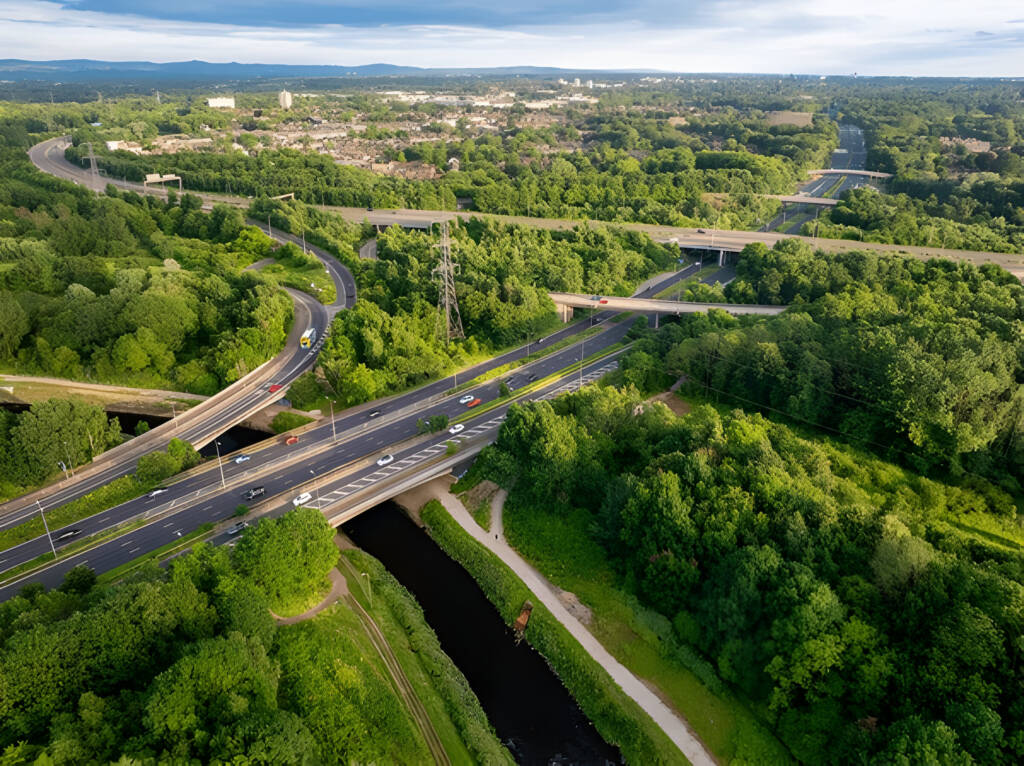Geotextiles have become an indispensable component of civil engineering projects, providing solutions that improve performance, durability, and sustainability. These synthetic fabrics are used in a wide range of applications, from road construction to erosion control, offering both functional and environmental benefits. In this blog, we’ll explore the ways geotextiles enhance civil engineering projects and why they are vital in modern construction.
What Are Geotextiles?
Geotextiles are permeable fabrics made from synthetic materials such as polyester or polypropylene. They are used in conjunction with soil, rock, or other geotechnical materials to enhance the properties of the substrate. There are two main types of geotextiles: woven and non-woven, each designed for specific functions in construction projects.

Key Applications of Geotextiles
Road Construction:
In road construction, geotextiles are used to separate, reinforce, filter, and drain. They are placed between the subgrade and the aggregate to prevent the mixing of materials, which improves the load-bearing capacity of the road and extends its lifespan.Erosion Control:
Geotextiles are widely used in erosion control projects to stabilize slopes and prevent soil erosion. They are particularly effective in protecting shorelines, riverbanks, and embankments from the erosive forces of water and wind.Drainage Systems:
In drainage systems, geotextiles act as a filter, allowing water to pass through while preventing the movement of fine particles. This helps to maintain the integrity of the drainage system and prevent clogging, ensuring efficient water management.Landfill Liners:
Geotextiles are used in landfill construction to protect geomembranes from puncture and to improve drainage. They help to maintain the stability of the landfill, reduce leachate production, and protect the environment from contamination.
Advantages of Geotextiles in Civil Engineering
Improved Performance:
Geotextiles enhance the performance of civil engineering projects by improving the structural stability and durability of the construction. They provide reinforcement, separation, and filtration, ensuring that the project meets the required standards.Cost-Effective Solutions:
The use of geotextiles can reduce construction costs by extending the life of the project and reducing the need for maintenance. They also minimize the amount of material required, leading to cost savings in materials and labor.Environmental Benefits:
Geotextiles contribute to sustainable construction practices by reducing the need for natural resources such as gravel and sand. They also prevent soil erosion and improve water management, protecting the environment from degradation.Versatility and Ease of Installation:
Geotextiles are versatile and can be used in a wide range of applications. They are easy to install, making them a convenient choice for construction projects. Their lightweight nature allows for quick deployment, reducing installation time.
Conclusion
Geotextiles play a crucial role in enhancing the performance and sustainability of civil engineering projects. Their ability to reinforce, filter, and separate makes them an essential component in modern construction. As the demand for durable and environmentally friendly construction solutions grows, the use of geotextiles will continue to expand, contributing to the development of resilient infrastructure.




